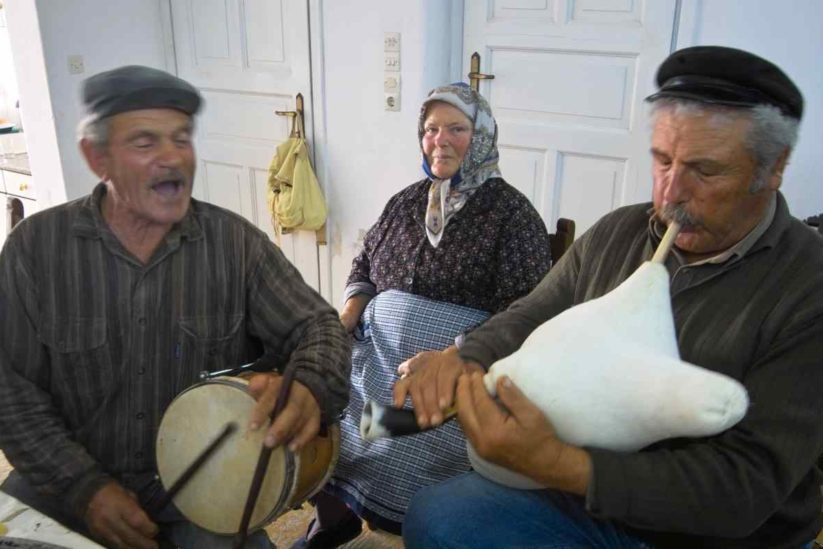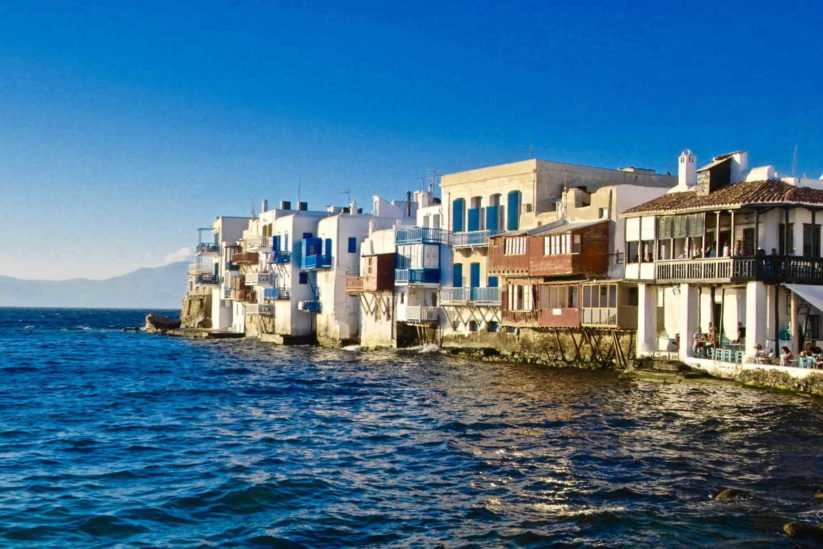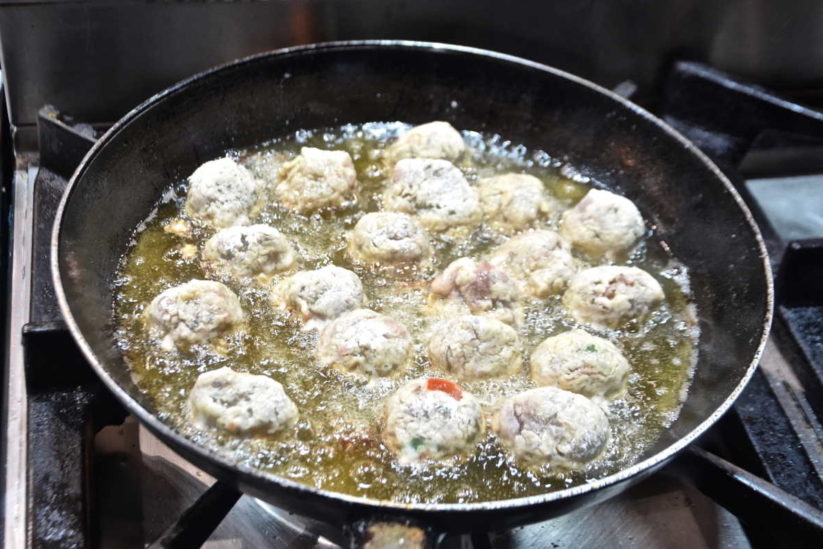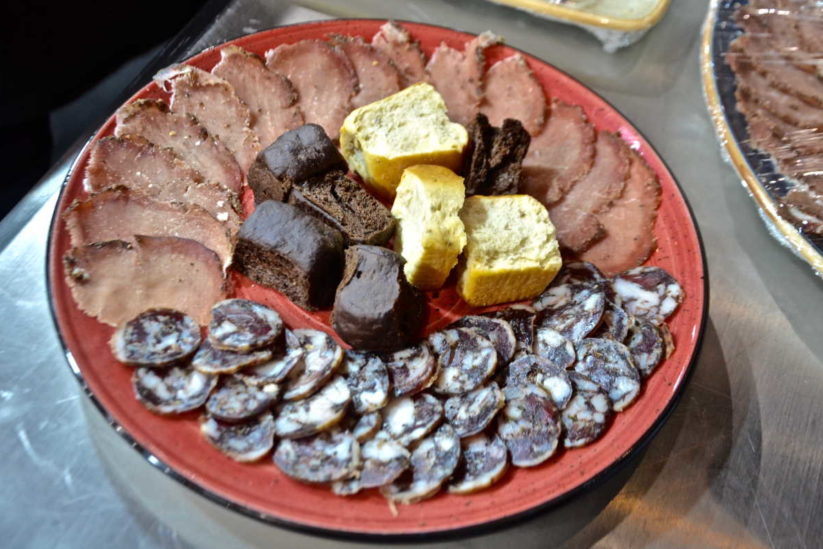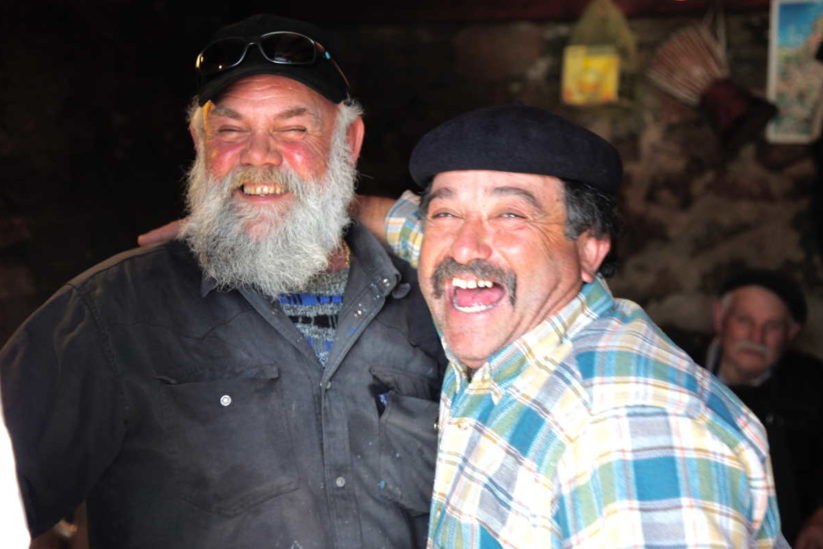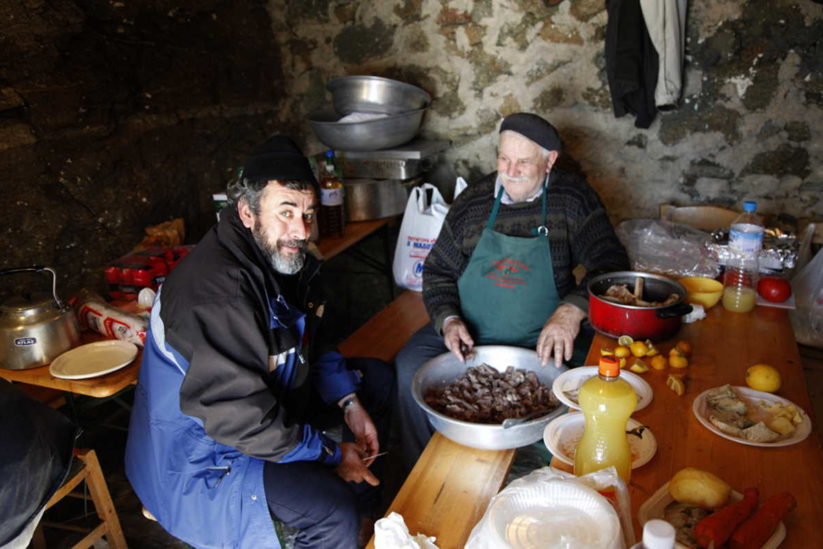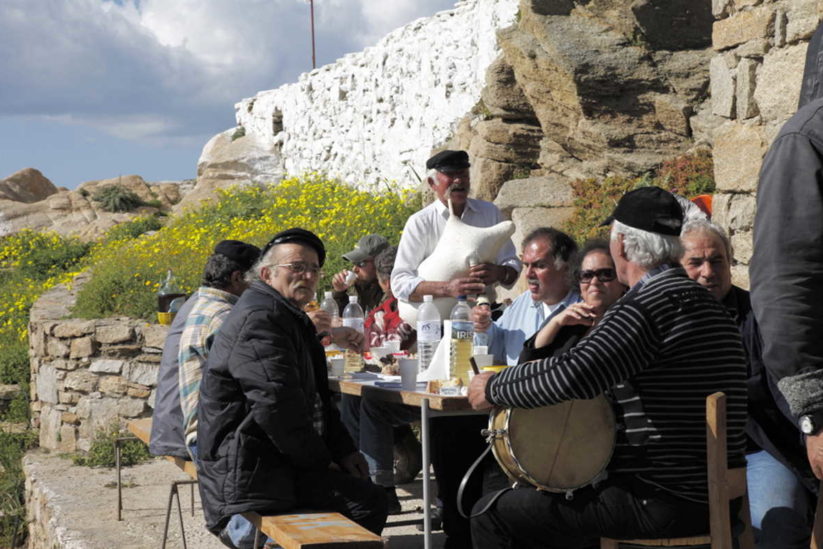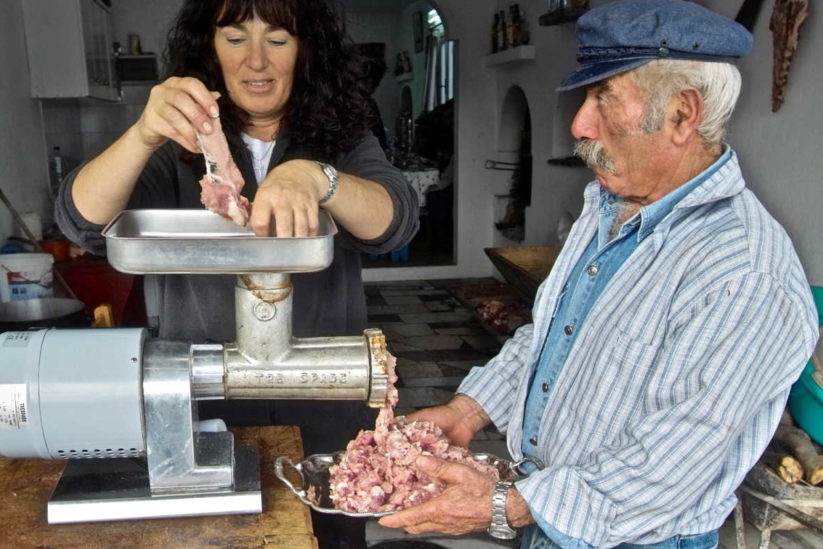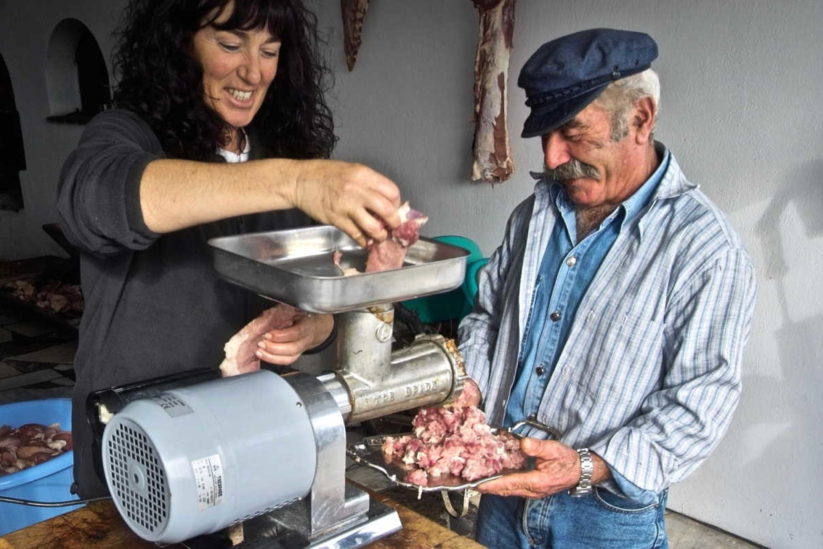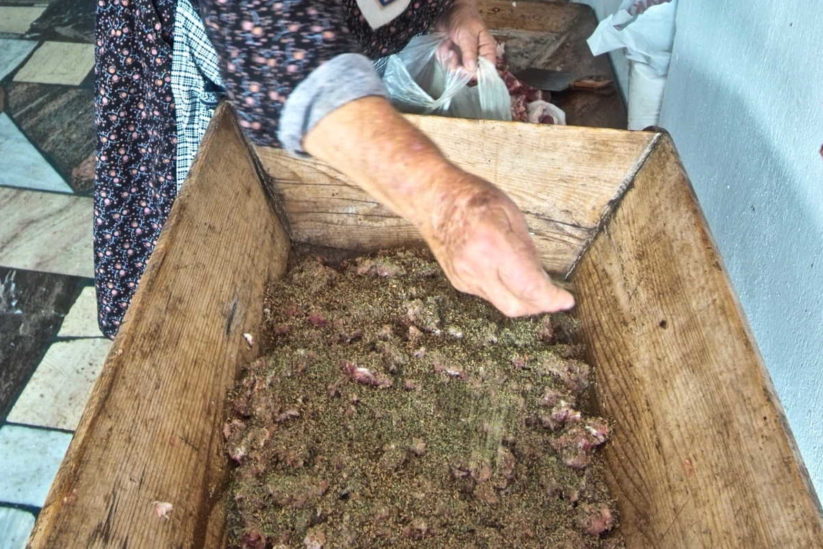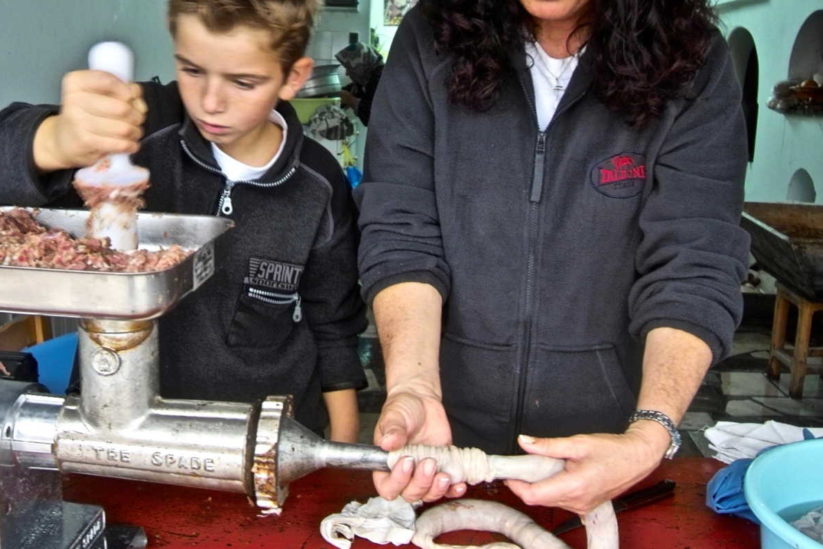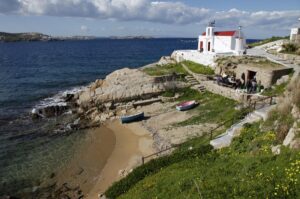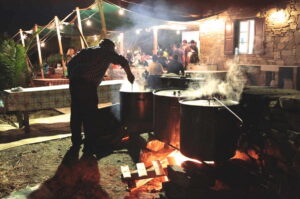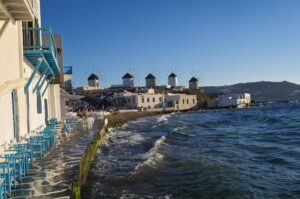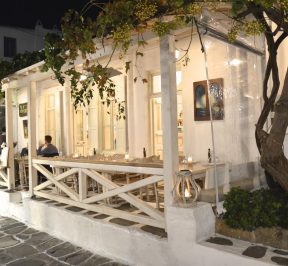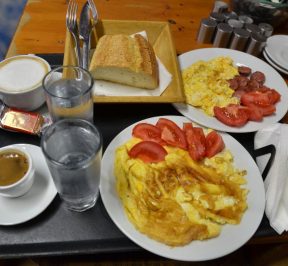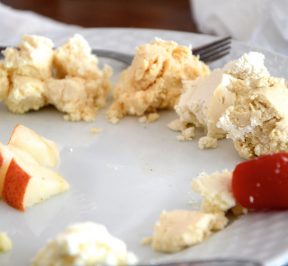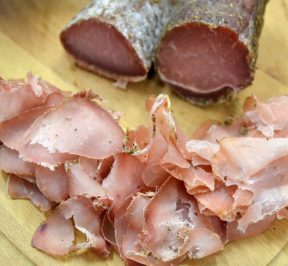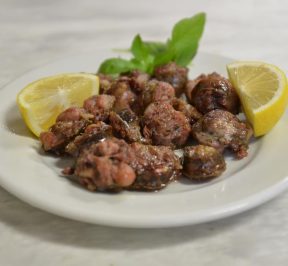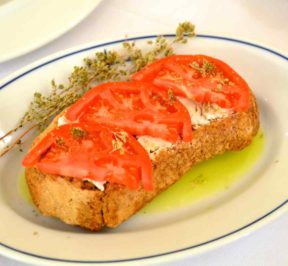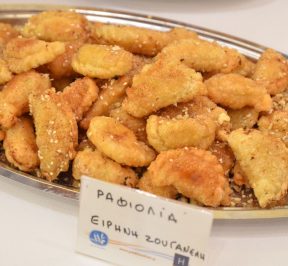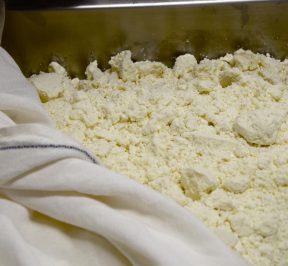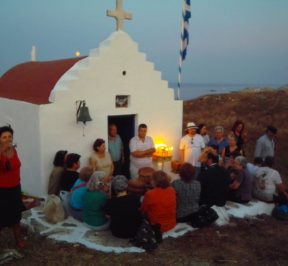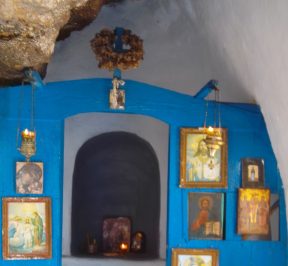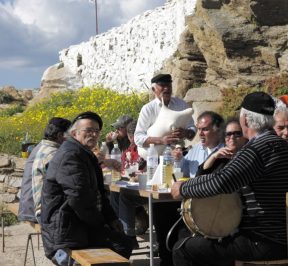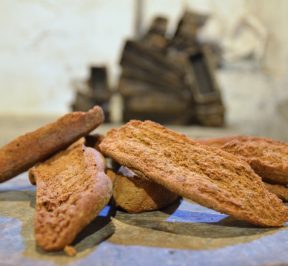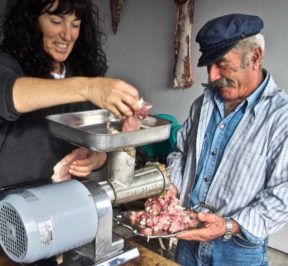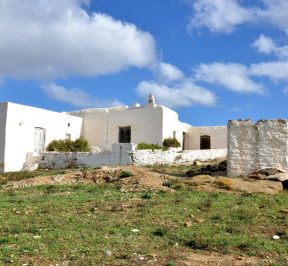Pig carcasses in Mykonos
In pig carcasses of Mykonos, The separation of the pig, that every Mykonos family nurtured with so much care all year round, this is the only way it could be done.
"Today there is a feast, today there is pork,
today they took our pig from the paddock…
For see a brilliant table and fiery dishes
and honest faces that 'yes surrounded…
Come, friends and brethren, rejoice tonight,
that we slaughtered our pig and gums we sing "
Why and as an architect wrote Aris Konstantidis who met the island in the 1960s for the people of Mykonos:
"Or that they know from food and feasts, and treats and songs, perhaps because from the most ancient years the god who was worshiped "par excellence" in Mykonos was Dionysus, which even today you find everywhere, in the country, in the port, in the open landscape. And whoever, finally, has the good fortune to be in “Pig slaughter”, which is made every year by people from Mykonos, where in a ritual way the concilia and the sausages and louzes, a Homeric will rejoice, I would dare say, atmosphere, under an open sky, and so as the sea will accompany him, from all sides around him, to unite him with the whole universe".
The pig and its products was from the old years very important in the diet of the people of Mykonos. When the pig was gaining weight, there, in the first cold of November, the family, in a pagan atmosphere, slaughtered it ritualistically, and together with relatives and friends celebrated the event. And it was a great fact, because this pig, with its pickled meat, fat, lard, clay and sausages, would feed them all year round.
Pork carcasses are still made today because - most importantly - the "Celebrants", those who will turn the slaughter of the animal into a Bacchic ritual.
Because, as Mykoniatis says Dimitris Rousounelos in his book Pig carcasses in Mykonos. Tastes of sacrifice:
"Teamwork, gastronomic delight, feasting and singing purify the custom despite the fact that the slaughter of the animal is a dominant - albeit momentary - event. The feast is also a component of the pig carcass. It is his Dionysian vein. Cultural material flows through it directly from antiquity. This tradition is still alive today. With roots that are lost in the depths of the centuries. In antiquity and in Byzantium, the same and largely unchanged. For the gods the goodness and for the people the pleasure. Because the gods want the caress too. And if it is not the gods who want it, it is the people who need it. They will fight "ok on bread only…". They will take care of the catitis, the seasoning, the party. Such were the ancient Mykonians, why not the modern ones…"
Pork carcass requires careful preparation, exemplary order and coordination, because within a day the living must be transformed into its edible products and at the same time the appetizers must be prepared for the feast that will follow.
After the slaughter of the pig, followed by scalding, hair removal with a razor and rubbing with salt. Then they cut off the head and legs, remove the entrails, intestines, heart, liver, lungs and spleen and cut the skin along with the fat into strips, the so-called straps.
The process of chopping the meat follows: first they remove the lozenges (sirloin) from the back of the animal, to the spine, followed by the broth (brisket) and the children. During the process, the butchers must laugh, in order to eat happily all year round, as the custom says.
So, not a moment goes by without teasing and jokes.
The pieces of pork that can not be preserved in salt or fat are consumed immediately and grilled (the mind, the spleen, the liver), the pig's head was cooked with cabbage, while the first steaks of the year are cooked for the meze that will accompanied the wine of the company.
Immediately in the following days they make it clay from pork fat. They store it in clay pots, to spread their nuts in winter or to taste the fried eggs. The pieces of meat that remain on the fat become cigarettes, which are eaten fried in winter.
At the same time they start making them sausages. Cut the pieces of pork into coarsely chopped minced meat, knead it well with spices, thyme, thyme and oregano, to make the filling for the intestines. Then hang the sausage high in the air to cook the north wind.
A similar process will be followed with louza, this famous delicacy of Mykonos.
If one finds oneself with the - less now but stately - people of Mykonos pig carcasses and seeing them how they keep their customs and how they have fun, he can understand where they get their strength from and resist the cultural flood that threatens them.
Contact
- AddressMykonos
- CategorySightseeing
- LeaseMykonos

